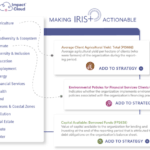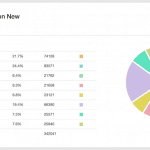Turning Saris into Stainless Steel: How the Companies of the Future Can Learn from Business Models of the Past
In the late 1960s and early 1970s, pots and pans used in Indian kitchens were largely made of brass, copper or earthenware. In most households, the daughters-in-law (who in upper middle-class households were assisted by servants) cooked for the family and carried out the arduous task of cleaning the brass and copper utensils using tamarind and coconut husk. When stainless steel was first introduced in India in the late 1960s, production was extremely limited, and kitchenware accounted for almost all stainless-steel consumption. Even by 2000, over 90 percent of the aggregate consumption of stainless steel in India was for kitchenware. Stainless steel kitchenware was in some ways the first large-scale use of a modern industrial product in Indian households.
Growing up in middle class India in the 1970s, it was an everyday experience to hear itinerant street vendors selling fruits, vegetables and all kinds of household wares, yelling at the top of their voices. The ones that I remember most distinctly were the “bhandivale,” who would barter used clothing for new stainless-steel kitchenware. As a young child, it was entertaining to watch how clothes that I grew out of were being traded for new pots and pans for our kitchen, in a completely cashless transaction.
Some 40 years later, these barter vendors have largely disappeared. But perhaps surprisingly, I find their business models even more fascinating – only now it’s because I can see the ingenuity behind them.
A Woman-Centric Sales and Distribution Model
Tens of thousands of such kitchenware vendors carried basketfuls of stainless steel utensils from door to door and bartered them for old clothes (mostly saris) across urban and rural India. Such was the lure of stainless steel kitchenware that women were willing to give up treasured items from their trousseau in exchange for a shining new cooking pan or a set of dinner plates.
This was a sales and distribution model designed for women. Men didn’t truly comprehend the hardships women faced in cleaning brass kitchenware, and as a result they didn’t appreciate the value proposition of the new stainless steel ones. In those days, most women did not have agency to use money for purchases. The barter-based direct selling system was such that women didn’t need money, they just had to find something in their clothes rack to give away in exchange for new kitchenware. And they could do it without leaving the confines of their home, in the afternoon when their husbands were away to work. In other words, the business model provided a pathway for women to gain agency to purchase a new product without requiring them to break social norms or deviate from their social identity.
Artisanal embroidered clothing from women from higher castes & higher social hierarchy fetched more money for the vendors. As a result, they put greater emphasis on targeting households which were more likely to have such clothing. In doing so they unknowingly created a targeting strategy focused in a socially determined direction for the diffusion of this new product, i.e. steel kitchenware. As mentioned earlier, stainless steel was scarce in terms of overall supply. A door-to-door sales and distribution model was more suitable for this scarce supply than brick-and-mortar retail sales would have been. In addition to recognizing women’s lack of agency, it let the principles of demand and supply operate more rationally – much different from the modern-day scarce distribution strategy, which involves thousands queuing up outside a Nike shop or an Apple store when a new product is launched.
A Complex Supply Chain
Behind the door-to-door barter, vendors employed a complex multi-tiered supply chain which sorted the clothes based on their resale value into three different streams: The more prized embroidery-based clothes were sold to foreign tourists, the lesser-valued clothes were sold back to lower middle-class customers as used clothes in “chindi” markets, and the rest were used in industrial cleaning applications. And there were many other possible applications: When I was discussing this with a colleague recently, he fondly remembered a rug made of chindi/rag patchwork he had bought for his college dormitory in Delhi.
These itinerant barter vendors, and the two or three layers of middlemen in the supply chain, were part of a closed-loop system which empowered women by providing them modern kitchenware. Their business model was excellent at sensing the needs of their female customers on the one hand, and generating monetization opportunities for the product collected on the other. These vendors fully understood the social norms and designed the customer journey and each component of the value delivery system around it. Given that this business model operated at razor thin margins for many decades (and without any venture capital to burn), presumably they had reasonably good route density and the overall cost economics of the size of each shipment they carried/distributed was sustainable. There was no formal regulation of this business: Any unscrupulous vendors found to defraud women customers with inferior quality products were quickly weeded out by strong social feedback loops between customers (an informal version of the modern-day review forum Yelp). Most of the women (and men) who worked as itinerant vendors came from a very marginalized community, and this provided them a source of employment and livelihood. But admittedly, the middlemen captured more of the profits, sometimes leaving the street vendors in very poor conditions.
Takeaways for Present-Day Businesses
When I visit the operations of Jumia or Flipkart, the largest e-commerce companies in Africa and India, respectively, I get excited about how they are constantly working to enhance the customer journey through their platforms. Jumia’s J-Force agent network solves for the dual challenges of youth employment and lack of high-speed internet access. J-Force agents help customers make online purchases by going to their doorsteps with mobile devices, and in return they get a small commission of the sales.
Modern logistics has come a long way in route optimization and the use of advanced algorithms for reducing unit delivery costs. It is increasingly becoming possible to reach rural households with a wide assortment of products at more affordable prices. However, the value creation linkages used by many modern-day delivery groups are firm-specific, or focused only on linkages with upstream supplier networks. Beyond collecting customer data, they do not always think about the potential downstream value which the customer interaction point could generate. For example, with the expanded reach of their rural distribution networks, could the logistics/delivery groups provide assisted telebanking services to their customers? Could they act as packet collection agents for courier and postal businesses? What can they bring back from the customer (besides money and data) to make the supply chain close the loop?
Similarly, we have come a long way in improving women’s financial inclusion. However, many women are still not using the financial products and services to which they have recently gained access. Behavioral science research is focusing on designing the financial products and delivery systems, but is it understanding the injunctive social norms within which the system must operate? India’s door-to-door barter model respected norms around intra-household decision-making and women’s access to and use of finance. In contrast, today’s new businesses sometimes question such social norms, instead of building their products and services around them – which is bold and important for social change. However, in trying to change such norms, they should work through a close group of friends or peers within the social network of women and their family members (e.g. mothers-in-law), or develop products and services which utilize existing women’s self-help groups for enhancing product uptake.
It may be a symptom of my middle-age nostalgia, but I think there are numerous opportunities for the inclusive markets community to learn from history – including the kinds of sales and distribution models common in India when I grew up. There are innovative retail models to be explored across cultures, including in the U.S., where organized retailing boosted women’s employment, and catalog merchants like Sears, Roebuck & Co. enabled rural black Southerners to make purchases by mail/phone and avoid the racism that they faced at smaller retailers.
The standard business school course on retailing offers very little in terms of history. But we can start to build such a repository – perhaps right here on NextBillion. So, if you have ideas, anecdotes or historical insights regarding inclusive market business models that operated within the souks, bazaars and mandis of your home country, please share – regardless of whether the stories are positive, or the business models are outdated in terms of inclusiveness or women’s empowerment. Even in our tech-driven, future-focused business climate, it can be valuable to take a moment to remember the lessons of the past.
Prashant Yadav is Lecturer on Global Health and Social Medicine at Harvard Medical School.
Image courtesy of Indi Samarajiva.
- Categories
- Uncategorized



